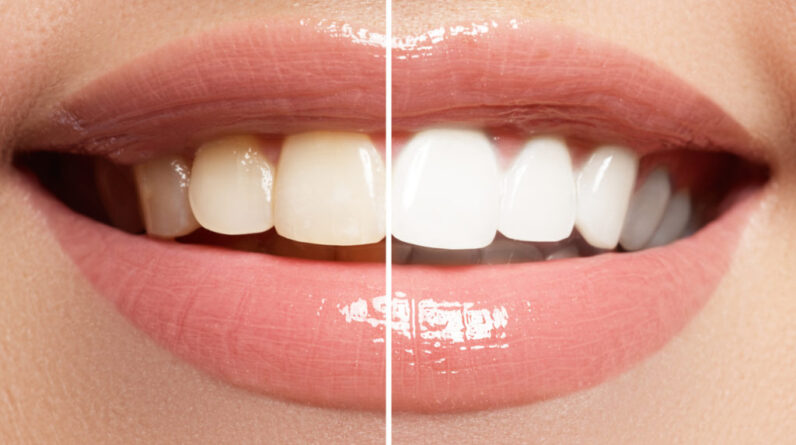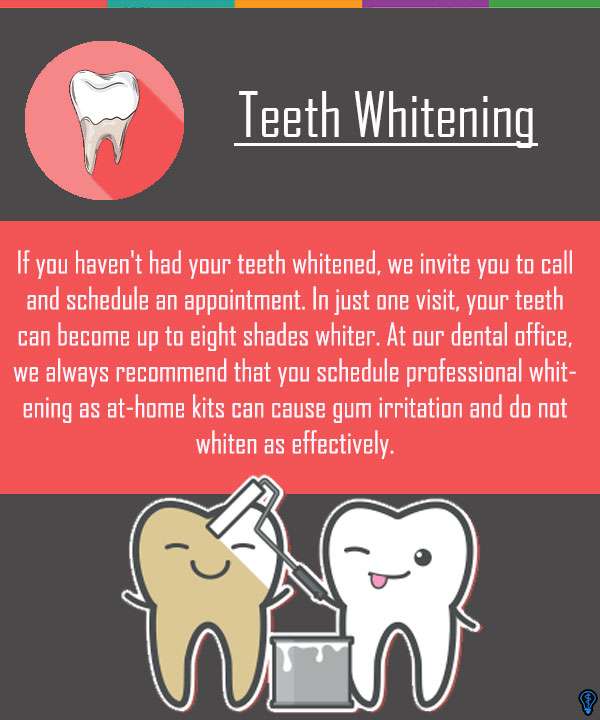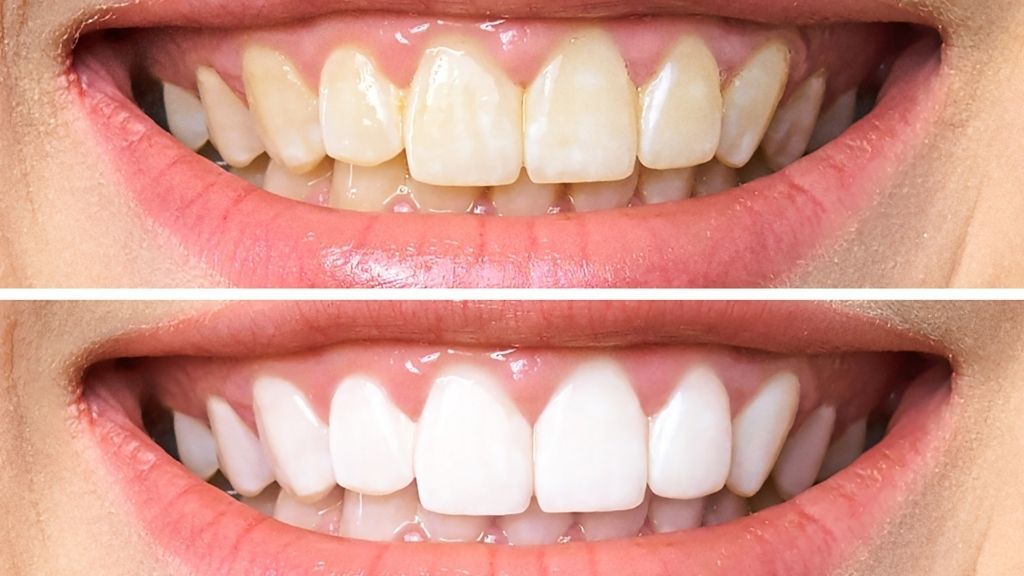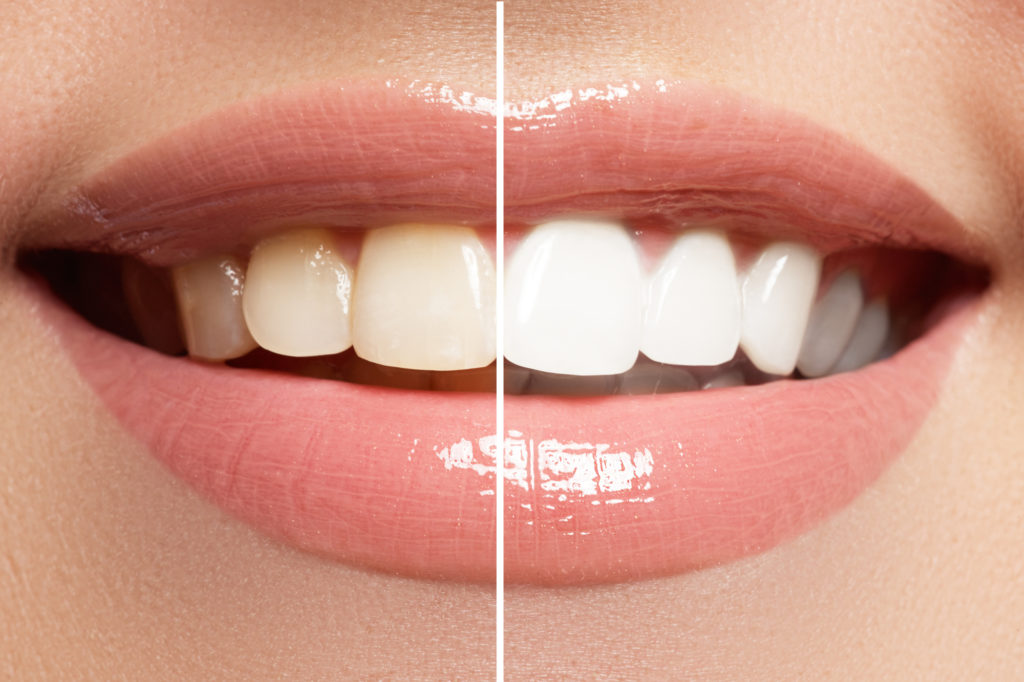
Are you looking to make your teeth white? If so, you’re not alone. Many people desire a bright, white smile. Luckily, there are various options available for teeth whitening. In this article, we will discuss what you need to know about teeth whitening and how you can achieve a dazzling smile.
One popular method of teeth whitening is through professional treatments at a dentist’s office. These treatments often involve the use of bleaching agents that can effectively remove stains and discoloration from your teeth. The advantage of professional treatments is that they are typically more powerful and can provide quicker results compared to at-home remedies. However, they can also be more expensive. Not to worry though, because there are also many over-the-counter options available that can help you achieve a whiter smile from the comfort of your own home. These products usually include whitening toothpaste, strips, and gels that you can easily apply yourself. While they may not be as powerful as professional treatments, they can still provide noticeable results over time. In our upcoming article, we will explore different teeth whitening products in more detail and discuss how to use them effectively for best results. So stay tuned and get ready to flash that pearly white smile!
Table of Contents
What You Need to Know About Teeth Whitening
Understanding Teeth Whitening
Teeth whitening is a popular cosmetic dental procedure aimed at lightening the color of your teeth, giving you a brighter, whiter smile. This procedure can help remove stains and discoloration caused by various factors such as aging, certain foods and drinks, tobacco use, poor dental hygiene, and certain medications. With several different methods available, it’s important to understand the process, potential risks, and the best practices for achieving and maintaining a dazzling smile.
What is Teeth Whitening?
Teeth whitening is a process that involves bleaching your teeth to make them appear lighter and brighter. It is mainly done to remove surface stains and discolorations, thereby improving the overall aesthetic appearance of your teeth. This procedure can be done either at home using over-the-counter products or by a dental professional at a clinic, depending on your preference and the severity of your teeth discoloration.

Why Do Teeth Become Discolored?
There are several reasons why teeth become discolored or stained. One of the common culprits is the consumption of certain foods and beverages such as coffee, tea, red wine, and cola, which contain pigments that can adhere to the tooth enamel. Tobacco use, both smoking and chewing tobacco, can also contribute to teeth discoloration. Additionally, poor dental hygiene, aging, and certain medications can cause yellowing or darkening of the teeth.
Different Methods of Teeth Whitening
There are various methods available for teeth whitening, ranging from at-home options to professional procedures performed by a dentist. Let’s explore the different methods to help you choose the one that suits your needs.

At-Home Teeth Whitening Options
Whitening Toothpastes
Whitening toothpastes are a popular and convenient choice for teeth whitening at home. They contain special ingredients that help remove surface stains and polish the teeth. However, whitening toothpastes may not be as effective in removing deep stains and discoloration. It’s important to note that whitening toothpastes are not meant to bleach the teeth, but rather maintain their whiteness and brightness.
Whitening Strips
Whitening strips are thin, flexible strips coated with a gel containing hydrogen peroxide, a bleaching agent. These strips are applied directly to the teeth for a specific period, following the instructions provided. The peroxide in the gel penetrates the enamel and bleaches the stains, gradually whitening your teeth. Whitening strips are convenient and generally provide visible results within a few weeks of regular use.
Whitening Trays
Whitening trays are custom-made trays designed to fit your teeth, which you can fill with a whitening gel and wear over your teeth for a certain period, usually overnight. The tray helps keep the gel in contact with your teeth, allowing the bleaching agent to work effectively. Whitening trays offer a more personalized approach to teeth whitening, as the trays are made specifically for your mouth shape, resulting in better coverage and potentially more noticeable results.
Professional Teeth Whitening Procedures
If you prefer a more supervised and controlled teeth whitening process, professional procedures performed by a dentist are highly recommended. These procedures are usually more powerful and can deliver faster and more dramatic results compared to at-home methods.
In-Office Whitening
In-office whitening, also known as chairside whitening, is a teeth whitening procedure performed by a dental professional in their office. The dentist applies a highly concentrated bleaching gel directly onto your teeth and may use a special light or laser to activate the gel. This method allows for quick and impressive results, often lightening the teeth several shades in just one session.
Laser Teeth Whitening
Laser teeth whitening is a type of in-office whitening procedure that uses a laser to enhance the effectiveness of the bleaching gel. The laser activates the gel, accelerating the whitening process. Laser teeth whitening is known for its efficiency and ability to deliver significant results in a short amount of time. This method is best suited for individuals with stubborn stains or severe discoloration.
Custom Bleaching Trays
Similar to the at-home whitening trays, custom bleaching trays are also used in professional teeth whitening procedures. However, instead of using them at home, the dentist provides you with the trays and a professional-strength bleaching gel to use under their guidance. This allows for a more controlled and personalized approach, ensuring optimal results and minimizing the risk of potential side effects.

Potential Side Effects and Risks
Teeth whitening, like any dental procedure, carries potential side effects and risks. It’s important to be aware of them before undergoing any whitening treatment.
Tooth Sensitivity
One of the most common side effects of teeth whitening is tooth sensitivity. This sensitivity can range from mild discomfort to sharp, shooting pains in response to hot, cold, or acidic foods and beverages. Most cases of tooth sensitivity subside within a few days or weeks after the whitening procedure. Using a toothpaste designed for sensitive teeth or applying desensitizing gel can help alleviate the discomfort.
Gum Irritation
Whitening products can sometimes cause irritation to the gums, leading to redness, swelling, and soreness. This usually occurs when the whitening gel or strip comes into contact with the gum tissue. The irritation is typically mild and temporary. However, it’s essential to follow the instructions provided with the whitening product to minimize the risk of gum irritation.
Enamel Damage
Although rare, excessive use or misuse of teeth whitening products can damage the tooth enamel. The enamel is the protective outer layer of the teeth, and any damage to it can result in sensitivity, weakened teeth, or increased susceptibility to tooth decay. To avoid enamel damage, it’s crucial to follow the recommended usage guidelines and consult with your dentist if you have any concerns.
Best Practices for Achieving and Maintaining White Teeth
While teeth whitening treatments can provide noticeable results, maintaining a bright, white smile requires continued effort and care. Here are some best practices to help you achieve and maintain a sparkling smile:
Regular Brushing and Flossing
Maintain good dental hygiene by brushing your teeth at least twice a day and flossing daily. Brushing and flossing help remove plaque and prevent stains and discoloration from developing on your teeth.
Avoiding Staining Foods and Drinks
Limit the consumption of foods and drinks known to stain teeth, such as coffee, tea, red wine, and dark-colored berries. If you do consume these substances, rinse your mouth with water afterward or brush your teeth to minimize their staining effects.
Regular Dental Check-ups
Schedule regular dental check-ups and cleanings with your dentist. Professional cleanings can remove surface stains and plaque buildup, contributing to whiter teeth. Your dentist will also monitor the health of your teeth and provide guidance on maintaining your whitening results.

Natural Teeth Whitening Remedies
In addition to professional and over-the-counter whitening products, there are some natural remedies that are believed to have teeth whitening properties. While these remedies may help remove surface stains, they might not produce the same level of whitening as professional treatments. Here are a few examples:
Baking Soda and Hydrogen Peroxide Paste
Mixing baking soda with hydrogen peroxide creates a paste that can be used as a natural teeth whitener. Apply the paste to your toothbrush and brush your teeth gently for a couple of minutes. Be cautious when using this method, as excessive use or scrubbing can damage the enamel.
Apple Cider Vinegar Rinse
Rinsing your mouth with diluted apple cider vinegar is believed to help remove stains and whiten teeth. However, it’s important to use caution with this method, as apple cider vinegar is acidic and can erode the tooth enamel if used too frequently or in high concentrations.
Activated Charcoal Powder
Activated charcoal powder has become increasingly popular as a natural teeth whitener. It is believed to absorb stains and toxins, leading to a whiter smile. However, there is limited scientific evidence to support its effectiveness, and excessive use may cause enamel erosion. Consult with your dentist before using activated charcoal powder as a teeth whitening method.
Teeth Whitening Myths Debunked
There are numerous myths and misconceptions surrounding teeth whitening. Let’s debunk some of the common ones:
Whitening Products Harm Tooth Enamel
When used correctly and according to the instructions, whitening products are unlikely to harm tooth enamel. However, misuse or overuse of these products can lead to enamel erosion and sensitivity. Following the recommended guidelines and consulting with your dentist will minimize any potential risks.
Whitening Results are Permanent
Teeth whitening treatments can significantly improve the color of your teeth, but the results are not permanent. Over time, your teeth may become stained or discolored again due to various factors. However, maintaining good oral hygiene and being mindful of staining foods and drinks can help prolong the effects of teeth whitening treatments.
Everyone Can Achieve the Same Level of Whitening
The success of teeth whitening treatments varies from person to person. Factors such as the severity and type of stains, the natural color of your teeth, and your overall dental health can influence the effectiveness of whitening treatments. It’s important to have realistic expectations and consult with a dental professional for personalized advice.

Teeth Whitening for Sensitive Teeth
If you have sensitive teeth, it’s important to take extra precautions when undergoing teeth whitening treatments. Here are some tips to help manage sensitivity:
Specialty Whitening Products for Sensitive Teeth
There are specialized whitening products available that are formulated for individuals with sensitive teeth. These products typically contain lower concentrations of bleaching agents, reducing the risk of sensitivity.
Consulting a Dentist for Alternative Options
If you have sensitive teeth and are concerned about potential discomfort during teeth whitening, it’s recommended to consult with your dentist. They can provide alternative options or recommend specific products that are gentle on sensitive teeth.
Managing Sensitivity during the Whitening Process
To minimize tooth sensitivity during teeth whitening, try using toothpaste designed for sensitive teeth prior to the treatment. Your dentist may also recommend applying a desensitizing gel or fluoride treatment before or after the whitening procedure. Avoid exposing your teeth to extremely hot or cold substances during the process, as this can exacerbate sensitivity.
Maintaining Oral Health During the Whitening Process
While striving for a whiter smile, it’s important to ensure the health and integrity of your teeth. Here are some tips to maintain oral health during the whitening process:
Following Recommended Instructions
Read and follow the instructions provided with your chosen whitening product carefully. Overusing or misusing the product can lead to negative effects such as sensitivity or enamel damage.
Maintaining Proper Oral Hygiene
Continue to maintain good oral hygiene practices throughout the teeth whitening process. Brush your teeth, floss regularly, and rinse your mouth with an antibacterial mouthwash to keep your teeth and gums healthy.
Avoiding Overuse of Whitening Products
It’s essential to use teeth whitening products as directed and avoid overuse. Excessive use of whitening products can damage the tooth enamel, causing increased sensitivity and weakening of the teeth. Follow the recommended treatment duration and consult with your dentist if you have any concerns.
Conclusion
Teeth whitening can significantly enhance the appearance of your smile, boosting your confidence and self-esteem. By understanding the different methods and potential risks associated with teeth whitening, you can make informed decisions tailored to your unique dental needs. Remember to prioritize proper oral hygiene, consult with a dental professional, and be mindful of any sensitivity during the process. With professional guidance and a commitment to maintaining oral health, you can achieve long-term benefits and enjoy a bright, white smile.







